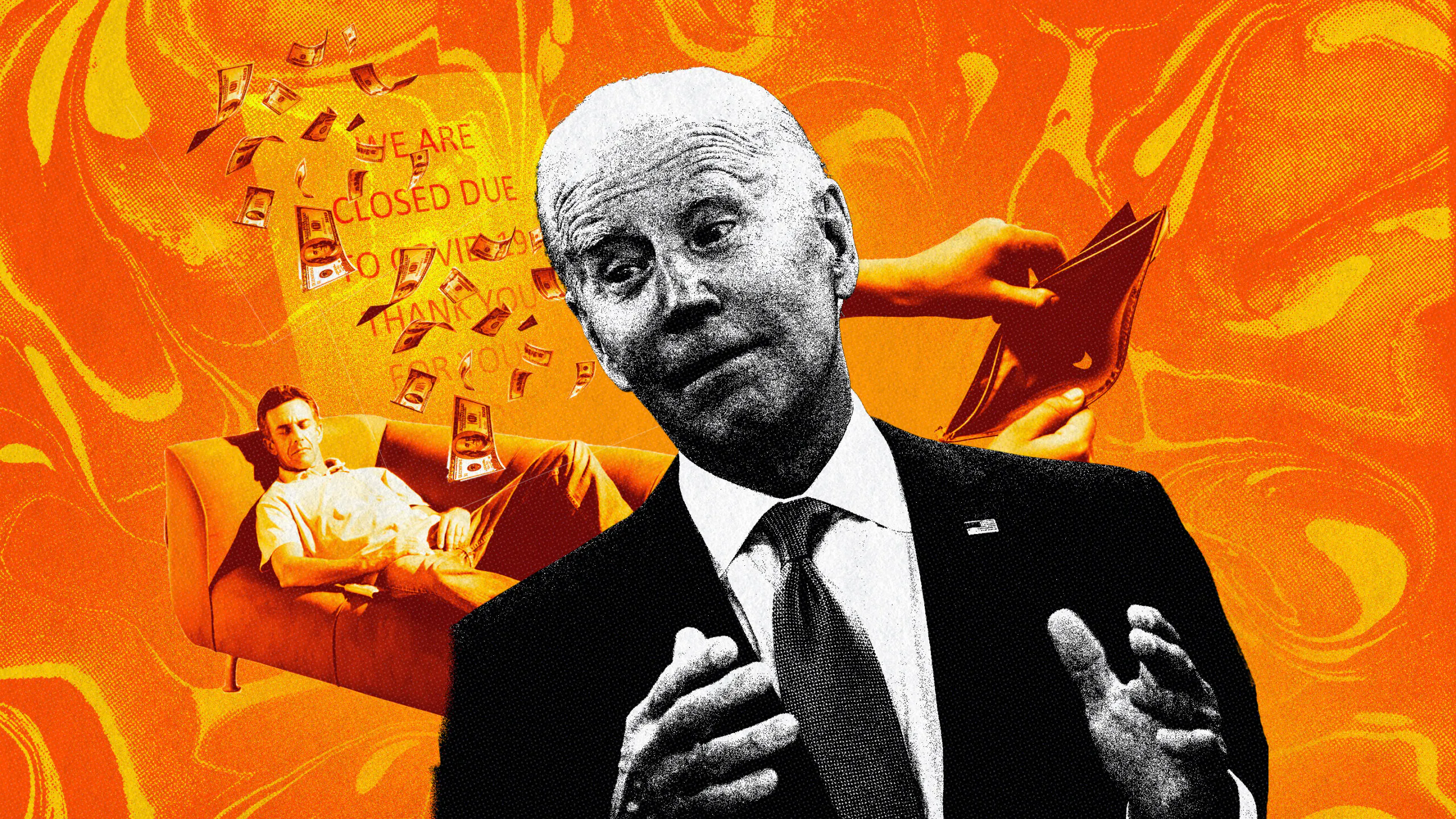COVID and the lockdown-induced recession did a number on American businesses and families. Yet more than two years since the crisis began, the economy still seems to be on its last leg — even amid President Joe Biden’s lofty plan to “Build Back Better.” In a four-part series, The Daily Wire chronicles the “Bidenomics” regime and how it is eviscerating the American people.
COVID and the lockdown-induced recession sent millions of employees home — and many of them never returned.
Virtually overnight, the unemployment rate soared from 3.5% to 14.7%, according to the U.S. Bureau of Labor Statistics. Through the following months, firms quickly ramped up hiring and as of May 2022, unemployment is once again at a robust 3.6%.
But with more jobs open than people available to fill them, the United States soon faced the opposite problem — which economists have dubbed the “Great Resignation.” Long lines plagued retail stores, restaurants were short staffed, and — perhaps most importantly — logistics companies struggled to fill positions, worsening the supply chain crisis and increasing inflation for consumer goods.
Even as businesses scrambled to attract workers, the labor force participation rate — the percentage of adults who are either holding a job or actively seeking one — had still not recovered from the dip it experienced in early 2020, according to more Bureau of Labor Statistics data.
It was as if someone were paying people to stay at home and refuse to work.
In March 2021, President Joe Biden enacted the American Rescue Plan — a $1.9 trillion package that extended the $300 weekly bonus unemployment benefits first passed under President Donald Trump through September 2021. A few months later — in the interest of returning their labor markets to normalcy — nearly half of American governors prematurely opted out of the extension.
For many states, the move was a success. Florida businesses hired 1.3 million workers between late May 2021 and August 2021, with 400,000 hires occurring in the three weeks after Governor Ron DeSantis (R-FL) nixed the unemployment program, according to data compiled by the Foundation for Government Accountability. Meanwhile, a paper published by the National Bureau of Economic Research confirmed that states choosing to leave the program saw “the flow of unemployed workers into employment” increase by two-thirds.
The Congressional Budget Office likewise discovered that extending $600 weekly unemployment checks — the original policy passed under President Donald Trump’s $2.3 trillion CARES Act — would cause “five of every six recipients” to earn more collecting the payments than returning to their jobs. After the benefits were later reduced to $300 per week, however, nearly half of jobless workers were still poised to do the same, according to JPMorgan Chase.
Rep. Kevin Brady (R-TX) confirmed to The Daily Wire that “study after study” has proven that the American Rescue Plan “fueled the inflation fire” by paying people “more to stay home than to reconnect to their jobs.”
“When Republican states opted to end the lavish unemployment benefits early, more Americans returned to work,” he commented. “Had states across the country followed suit, employment would have increased by 1.6 million jobs — bolstering our recovery.”
Nevertheless, labor shortages lasted through much of 2021. In one survey of economists conducted by The Wall Street Journal, nearly one-fifth of respondents pointed to the phenomenon as the “biggest threat” to economic growth.
Even though there was by no means a shortage of available jobs and even as nominal wages continued to rise, real wages — which account for the effect of inflation upon workers’ earnings — dropped 3% between May 2021 and May 2022. To enjoy the same standard of living, an American earning $50,000 per year would therefore have to work longer hours or slash his budget by $1,500.
“Workers are watching their paychecks fall further and further behind rising prices at the pump and the grocery store,” Brady said. “Many Americans are cutting back on common household expenses, and taking on more debt to make ends meet. But for low-income households, they’re being hit the hardest because they’ve had their savings wiped out.”
Businesses are hardly immune from rising price levels. In addition to contending with higher energy prices, the low availability of workers helped to prevent inputs from reaching their facilities — causing more than 90% of manufacturing leaders to identify higher raw material costs as one of the “primary business challenges” in early 2022, according to a survey from the National Association of Manufacturers.
From May 2021 to May 2022, the Producer Price Index (PPI) rose 10.8%, a report from the Bureau of Labor Statistics revealed.
“For six months in a row, Main Street businesses have been hit by double-digit inflation,” Brady said, “and that means higher prices ahead for families as businesses are forced to pass the increases along in this cruel Biden economy.”

Continue reading this exclusive article and join the conversation, plus watch free videos on DW+
Already a member?

.png)
.png)

